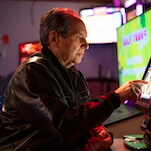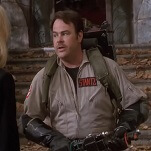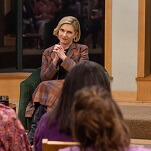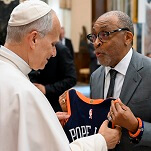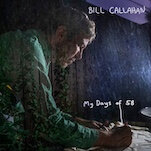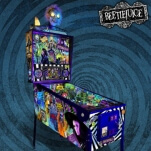In 2024, women directed only 16% of the 250 top-grossing films in the United States. In the ceremony’s 97-year history, only three women have won Best Director at the Academy Awards, and all of those wins were within the past two decades. Historically, women filmmakers have been underrepresented and underappreciated, despite their work consistently driving some of the biggest cultural conversations. Film critic and historian Marya E. Gates interrogates that dichotomy in her new book, Cinema Her Way: Visionary Female Directors In Their Own Words (out now via Rizzoli New York). In it, Gates interviews filmmakers including Jane Campion (the most recent female winner of the Best Director Oscar), Miranda July, Marielle Heller, and Karyn Kusama. In this exclusive excerpt, Kusama talks about why she uses practical effects instead of CGI whenever possible and why she loves to show characters doing mundane tasks.
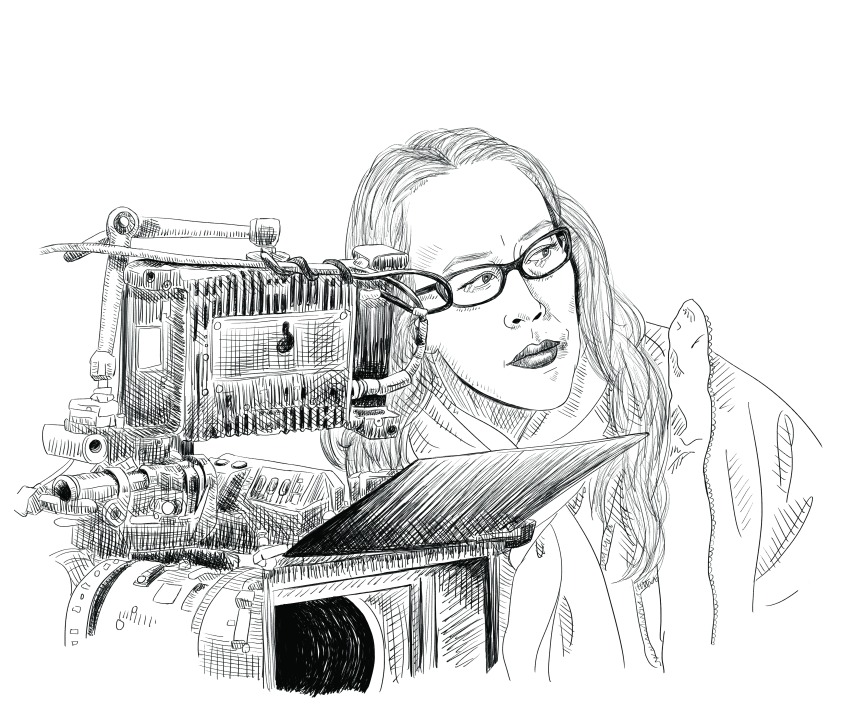
Illustration of Karyn Kusama: (c) Alex Kittle
Jennifer’s Body is a film that has these two best friends in that same state of trying to really see each other, but it also has some wonderful practical effects. Like that scene where Jennifer vomits the black ooze, and it’s Hershey’s syrup or something. It’s still so gross. Can you talk a bit about achieving those effects?
I think, first of all, I was at this technological cusp when I was making films when I started in 1999. By the time I had finished Jennifer’s Body, and it was released in 2009, that ten-year period was transitioning to more and more use of digital effects. But the fact is, it was still a lot of pretty wonky technology. It wasn’t easy to achieve good-looking special effects with the digital approach or CGI approach. I was always just like, “Well, how’s it going to look?”
But also, because I started working for John, who got his start with Roger Corman, it was easy for me to see that there was a genuine romance to making something happen in front of you and to ask yourself, “Is it working or not?” Because as you see it, you just got to see what the effect was, as opposed to having to imagine what was happening as you do with CGI.
I feel like I have managed to shoot people vomiting on camera far more than I thought I would. I don’t know why that’s a trademark of some of my work. But in fact, I think it kind of is. And part of it is, I love the practical effects of it. I think it’s really fun, it creates a little bit of a break on set where everyone’s going to try to make that vomit gag work. There’s something earnest about a lot of these kinds of special effects that are filmed in camera, and for real, and what special effects artists do.
Over the years I’ve gotten to know so many interesting teams of special effects artists. Imagine giving a bunch of people the opportunity to make things explode or emit steam or catch fire or become slimy and it’s like speaking to the part of me that was once a child and can enjoy the magic of trying to make something look real on film that might be a little bit heightened, or just as interesting, by mimicking real life, but it not be as easy to achieve as it would look.
That gag plays so well, because it’s horrifying, but it’s a little bit funny, and then you cut to Needy who has given up trying to Swiffer it up. That made me laugh so much it hurt the last time I watched it because you can’t Swiffer up the Devil.
Nope. Nope. It’s hard to clean up that mess.
One of the things that I think is lovely in a lot of your films is there’s tidbits of very feminine activities that aren’t necessarily there to move the plot forward. Like her cleaning up the mess or the scenes of her cooking. It’s just there. You sort of see it in Destroyer a few times as well. Just those little moments and you don’t call attention to it. I’m not sure how many other films would have shown her trying to clean up the mess. What are your thoughts on showing some of these aspects that we take for granted as women but aren’t often shown in cinema?
It would come as no surprise that one of my favorite movies of all time is Chantal Akerman’s Jeanne Dielman, 23 quai du Commerce, 1080 Bruxelles. I take the concept, both literally and metaphorically, of domestic labor very, very seriously. It is one of the bedrock, spirited conversations in my family and my home. It was the bedrock source of conflict for my parents in their home. I think I can’t not watch people cook, clean, and eat. Because it is so much part of what makes us human. I chafe at the insistence that those things make us female. How convenient to the culture, if that were true. It just makes us human and our decision to participate in both the actions around it and the depiction of those actions is part of our translation of humanity back to the world.
There was a scene that I still think about that got cut from Destroyer. It was just a scene of Erin Bell, played by Nicole Kidman, sitting at her kitchen table with a container of takeout food. You can’t see exactly what it is, but she’s just shoveling it into her face and eating as if she hasn’t eaten in days. As if there are unseen assailants about to steal her food from her. I loved the scene.
I loved shooting it. I loved watching it. But it derailed us a bit from the narrative train that we were on. And yet it was something I fought for at the script stage. I needed to see what it’s like when Erin Bell eats by herself. It shows the kind of person she is. She’s a frightened animal, really. It was one of those things where I was like, “I will forever be sad that it couldn’t end up in the final movie.” But in a weird way, shooting it at least told me something about the character that I could use and that could continue to inform me, and Nicole could use as we were making the film.

















